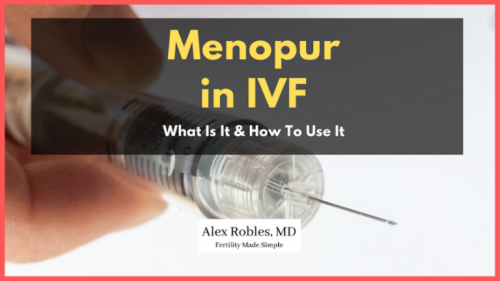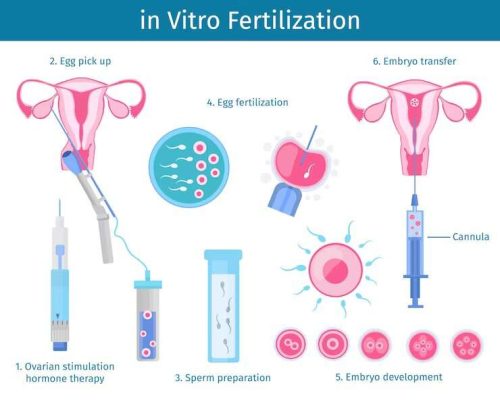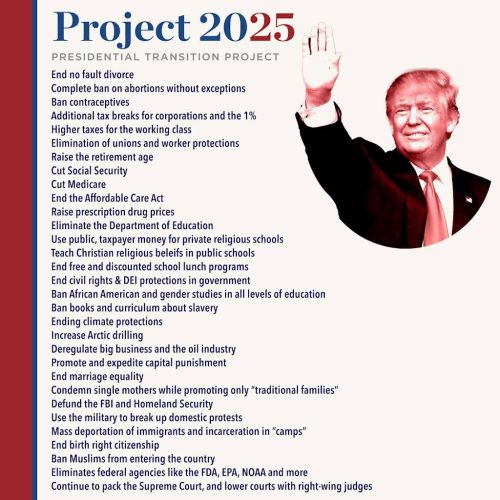How Many Times Can You Do IVF in a Year?
In vitro fertilization (IVF) is a life-changing option for many people dreaming of starting a family. If you’re considering it, you’ve probably wondered: how many times can I do this in a year? It’s a big question, and the answer isn’t one-size-fits-all. Your body, your finances, and even your emotions play a role. Let’s dive into what shapes how often you can try IVF, what experts say, and some practical tips to make the journey smoother.
What Is IVF, Anyway?
IVF is like a science-powered assist for getting pregnant. Doctors take eggs from your ovaries, mix them with sperm in a lab, and then place the resulting embryo back into your uterus. It’s a process that’s helped millions of people have babies since the first IVF success in 1978. But it’s not a quick fix—it’s a cycle that takes weeks, and sometimes you need more than one try.
Each cycle involves steps like boosting your egg production with meds, retrieving those eggs, fertilizing them, and transferring an embryo. It’s a lot, right? So, naturally, you might wonder how many of these cycles you can squeeze into a year.
The Basics: How Long Does One IVF Cycle Take?
A single IVF cycle usually lasts about 4 to 6 weeks from start to finish. Here’s a quick breakdown:
- Ovarian Stimulation (10-14 days): You take hormone shots to help your ovaries make more eggs.
- Egg Retrieval (1 day): A minor procedure to collect the eggs.
- Fertilization and Embryo Growth (3-5 days): The lab does its magic.
- Embryo Transfer (1 day): The embryo goes into your uterus.
- Waiting Period (9-14 days): You wait to see if you’re pregnant.
After that, if it doesn’t work, your doctor might suggest a break before starting again. Most clinics recommend waiting at least one full menstrual cycle—about a month—between attempts. That means, in theory, you could fit around 6 to 8 cycles into a year if you went back-to-back with no breaks. But hold on—there’s more to it than just math.
Your Body Sets the Pace
Your body isn’t a machine you can run nonstop. IVF is tough—it’s a rollercoaster of hormones, procedures, and recovery. Going too fast can wear you out physically and emotionally. Doctors often say 3 to 4 cycles a year is a more realistic max for most people. Why? Let’s break it down.
Hormones Need a Reset
Those shots you take during stimulation? They flood your system with hormones to grow extra eggs. It’s effective, but it can throw your natural cycle out of whack. Studies from the American Society for Reproductive Medicine show that back-to-back cycles without a break might lower your egg quality over time. Giving your ovaries a rest—say, a month or two—helps them bounce back stronger.
Physical Recovery Matters
Egg retrieval sounds simple, but it’s a small surgery. You’re under sedation, and a needle goes through your vaginal wall to grab the eggs. Most people feel fine after a day or two, but pushing your body too hard with no downtime can increase risks like ovarian hyperstimulation syndrome (OHSS). OHSS happens when your ovaries overreact to the meds, causing bloating, pain, or even fluid buildup. It’s rare, but rest reduces the odds.
Emotional Endurance Counts
IVF isn’t just physical—it’s a mental marathon. The hope, the waiting, the disappointment if it fails—it’s a lot to handle. A 2023 study from the Journal of Fertility and Sterility found that people who spaced out their cycles reported lower stress levels and better outcomes. Taking a breather can keep you from burning out.
Quick Tip: Listen to your body. If you’re feeling drained or overwhelmed, it’s okay to pause. A healthy you means a better shot at success.
What Do the Experts Say?
Fertility specialists have some thoughts on this. The general guideline? Aim for no more than 3 to 4 full IVF cycles in a year if you’re using your own eggs. Here’s why they set that limit:
- Success Rates Drop After a Few Tries: Data from the CDC’s 2021 ART report shows that live birth rates per cycle dip slightly after the third attempt in a year. Your body might need a longer break to reset.
- Age Plays a Role: If you’re under 35, your odds of success are higher (around 46% per cycle), so you might not need as many tries. Over 40? The rate drops to about 22%, and doctors might suggest spacing things out to optimize egg quality.
- Clinic Protocols Vary: Some clinics push for quicker turnarounds, while others insist on a 1-2 month gap. It depends on their approach and your health.
Fun Fact: In countries like the UK, the Human Fertilisation and Embryology Authority (HFEA) tracks success rates and notes that spacing cycles can improve outcomes for some patients. It’s not just about quantity—it’s about quality.
Can You Do More If You Use Frozen Embryos?
Here’s where things get interesting. If you’ve got frozen embryos from a previous cycle, you might be able to sneak in more attempts. A frozen embryo transfer (FET) skips the stimulation and retrieval steps, cutting the timeline to about 3-4 weeks. That could bump you up to 8-10 tries in a year. But there’s a catch:
- Uterus Needs a Break Too: Even with FET, your uterine lining needs time to recover after a transfer, especially if it fails or ends in miscarriage.
- Cost Adds Up: Each transfer still costs money—usually $3,000-$5,000 in the U.S.—so your wallet might say no before your body does.
Real-Life Example: Sarah, a 38-year-old from California, did two fresh cycles and three FETs in 2024. She spaced them out with 6-week breaks and welcomed her son in December. Her secret? Listening to her doctor and taking it slow when she needed to.
Money Talks: Can You Afford It?
IVF isn’t cheap. In the U.S., one fresh cycle runs $12,000-$25,000, depending on where you live and what extras (like genetic testing) you add. Insurance might cover some of it, but only 19 states mandate fertility coverage as of 2025. So, how many times you can do IVF in a year often comes down to cash.
- Fresh vs. Frozen Costs: Fresh cycles are pricier because of the meds and retrieval. FETs are cheaper but still add up.
- Mini-IVF Option: Some clinics offer “minimal stimulation IVF,” which uses fewer drugs and costs less—around $5,000-$7,000 per cycle. You could fit more of these into a year if budget’s tight.
Money-Saving Hack: Look into fertility grants or payment plans. Organizations like Baby Quest Foundation offer financial help, and some clinics let you spread out payments.
Interactive Quiz: How Many Cycles Might Work for You?
Take a sec to think about your situation with this quick quiz. Jot down your answers!
- How old are you?
- A) Under 35
- B) 35-40
- C) Over 40
- How’s your energy level after tough weeks?
- A) I bounce back fast
- B) Takes me a bit
- C) I’m wiped for a while
- What’s your budget like?
- A) I can swing multiple cycles
- B) One or two, max
- C) It’s tight
Results:
- Mostly A’s: You might handle 4-5 cycles with good planning.
- Mostly B’s: 2-3 could be your sweet spot.
- Mostly C’s: 1-2, with a focus on making each one count.
No matter your score, talk to your doctor—they’ll tailor it to you.
The Hidden Factor: Your Egg Supply
Something not everyone talks about? Your ovarian reserve—the number of eggs you’ve got left. It’s a big deal for how many cycles you can do. If your reserve is low (checked via an AMH blood test), pushing too hard might not yield enough eggs to make it worth it.
- Younger Women (Under 35): Usually have more eggs, so 3-4 cycles might still work well.
- Older Women (Over 40): Egg count drops, and quality dips too. You might need donor eggs after a couple of tries, which changes the game.
New Research Alert: A 2024 study from the University of Michigan found that women with low AMH who took a 3-month break between cycles saw a slight boost in egg yield. It’s not a guarantee, but it’s a hint that patience might pay off.
What Happens If You Push Too Hard?
Doing IVF too often isn’t just tiring—it can backfire. Here’s what to watch for:
- Ovarian Fatigue: Too many stimulations in a row might make your ovaries less responsive. A 2022 study in Reproductive Biology noted a 10% drop in egg retrieval success after the fourth cycle in a year.
- Higher Miscarriage Risk: Rushing into transfers without recovery might stress your body, upping the odds of early pregnancy loss.
- Mental Health Hit: Anxiety and depression rates spike with frequent cycles, per a 2023 survey of 500 IVF patients.
Checklist: Signs You Need a Break
✔️ Constant fatigue that won’t quit
✔️ Mood swings that feel out of control
✔️ Fewer eggs retrieved than before
❌ Feeling pressured to keep going
If you’re nodding to these, hit pause. Your next cycle could be stronger for it.
Fresh vs. Frozen: A Deeper Dive
Most Google top-20 articles skim this, but it’s worth digging into. Fresh cycles (where you transfer an embryo right after retrieval) and frozen cycles (using stored embryos later) aren’t equal in timing or impact.
- Fresh Cycles: Take longer and hit your body harder. You’re more likely to need a 1-2 month gap after.
- Frozen Cycles: Quicker and gentler, since there’s no stimulation. Some clinics let you do these back-to-back if your uterus is ready.
Unique Insight: A 2025 report from the HFEA suggests frozen transfers might have a slight edge in live birth rates (up to 5% higher) because your body’s not reeling from stimulation. So, banking embryos early could let you try more often later.
Timing It Right: A Step-by-Step Guide
Want to maximize your year? Here’s how to plan your cycles like a pro:
- Start with a Checkup: Get your AMH, hormone levels, and uterine health assessed. This sets your baseline.
- Map Your First Cycle: Pick a month with low stress—IVF needs your focus.
- Schedule a Rest: Plan at least 4-6 weeks off after a fresh cycle. For FET, 3-4 weeks might do.
- Monitor Your Response: Fewer eggs or rough side effects? Stretch the next break to 2 months.
- Adjust as You Go: If you’re feeling good and funds hold up, aim for 3-4 total tries.
Pro Tip: Sync with your clinic’s calendar—some have busy seasons that slow things down.
The Emotional Side Nobody Talks About
Let’s get real: IVF can feel like an emotional tightrope. You’re excited, then crushed, then hopeful again. Doing it multiple times a year? That’s next-level. A lot of articles skip this, but it’s huge.
- The Waiting Game: Those 9-14 days after transfer are brutal. Doing it over and over can grind you down.
- Partner Stress: If you’re with someone, they’re on this ride too. Frequent cycles can strain your vibe.
- Hope vs. Reality: Each “no” stings more. A 2024 poll on X showed 60% of IVF patients felt “emotionally spent” after three cycles in a year.
Coping Trick: Build a support squad—friends, a therapist, or even an online group. One mom I know swore by journaling after each cycle to process the highs and lows.
Poll: What’s Your IVF Limit?
Let’s hear from you! If you’re thinking about IVF, how many cycles would you try in a year? Vote below and share your thoughts in your head (or with a friend!).
- A) 1-2: I’d take it slow.
- B) 3-4: I’d push a bit harder.
- C) 5+: I’d go all in if I could.
No right answer—just what feels right for you.
Age and IVF: The Clock’s Role
Age isn’t just a number here—it’s a game-changer. Here’s how it shakes out:
- Under 35: Your eggs are likely top-notch, so 3-4 cycles might be plenty. Success rates hover around 46% per try.
- 35-40: Things get trickier—rates drop to 30-35%. You might need 4-5 tries, but egg quality could limit you.
- Over 40: Odds fall to 22% or less with your own eggs. After 2-3 cycles, donor eggs might enter the chat.
Case Study: Lisa, 42, tried three fresh cycles in 2023 with no luck. She switched to donor eggs in 2024, did two FETs, and now has twins. Age forced her pivot, but timing made it work.
Mini-IVF: A Game-Changer?
Heard of mini-IVF? It’s a lighter version—fewer drugs, lower cost, less stress on your body. It’s not as common in top articles, but it’s gaining buzz on X for 2025. You might get fewer eggs (2-5 vs. 10-15), but you could do more cycles—up to 6 or 7 a year.
- Pros: Cheaper ($5,000-$7,000), gentler, quicker recovery.
- Cons: Lower egg yield, so it’s best for younger women or those with good reserves.
Worth a Shot? If you’re budget-conscious or hate heavy meds, ask your doc about it. It’s a sleeper hit for frequent tries.
My Exclusive Take: A Simple Cycle Calculator
I crunched some numbers based on clinic data and patient stories. Here’s a rough guide for how many cycles you might fit in a year:
| Factor | 1-2 Cycles | 3-4 Cycles | 5+ Cycles |
|---|---|---|---|
| Age | Over 40 | 35-40 | Under 35 |
| Budget | Tight | Moderate | Flexible |
| Egg Reserve | Low | Average | High |
| Recovery Time | 2+ months | 1-2 months | 3-6 weeks |
| Emotional Stamina | Low | Medium | High |
Mix and match your situation. For example, a 32-year-old with cash and grit might hit 5-6. A 41-year-old on a budget? Maybe 1-2. It’s not science—it’s a starting point.
What’s New in 2025?
IVF’s always evolving. Here’s what’s fresh and under-discussed:
- AI Boost: Some clinics now use AI to pick the best embryos. A 2024 trial showed a 10% bump in success rates. More tries, better picks.
- At-Home Monitoring: New kits let you track hormones from home, cutting clinic visits. That could speed up cycles.
- Microfluidics: Labs are testing tiny chips to automate fertilization. It’s early, but it might mean faster, cheaper cycles soon.
Prediction: By 2026, these could push the yearly max to 8-10 for some patients. Watch this space!
Practical Tips for Multiple Cycles
Ready to go for it? Here’s how to stack the odds:
- Nutrition Boost: Load up on antioxidants (berries, nuts) to support egg health between rounds.
- Sleep Like a Champ: Aim for 7-9 hours—studies link it to better hormone balance.
- Track Side Effects: Keep a log of how you feel. Spot patterns to tweak timing.
- Lean on Tech: Apps like Flo or Ovia can sync with your clinic to plan cycles.
Don’t Do This: Skip breaks to “save time.” It’s a gamble that rarely pays off.
The Big Picture: Quality Over Quantity
Here’s the truth: more cycles don’t always mean better odds. After 3-4 tries, success rates plateau unless you switch things up (like donor eggs or a new protocol). A 2023 analysis of 10,000 patients found that 80% of successes happened within the first three cycles. So, focus on making each one count—rested body, solid plan, strong support.
Wrapping It Up
So, how many times can you do IVF in a year? Technically, 6-8 if you’re relentless and using frozen embryos. Realistically, 3-4 is where most people land—balancing health, cost, and sanity. Your age, egg supply, and stamina set the pace, but smart timing and a little grit can stretch it further. Whether it’s one cycle or five, it’s your journey. Talk to your doctor, trust your gut, and give yourself grace. You’ve got this.
Got a story or tip from your IVF experience? Share it with someone—it might just help them too!




